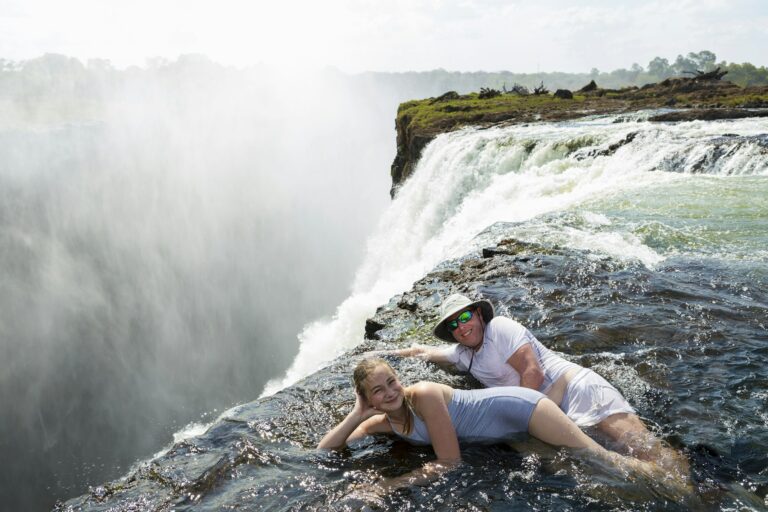The Great Wildebeest Migration is a dynamic, year-round event, moving in a circular path through Tanzania’s Serengeti and Kenya’s Maasai Mara. Each season offers unique scenes, from river crossings to calving and predator-prey interactions. Here’s a guide to help you choose the best time for your migration safari based on the highlights of each phase.
December to March – Calving Season (Southern Serengeti, Tanzania)
Highlights:
- This is the calving period when wildebeest give birth to over 500,000 calves in just a few weeks on the lush southern Serengeti plains.
- Predators such as lions, cheetahs, and hyenas gather to prey on the vulnerable young, creating intense and dramatic moments.
- It’s an ideal time for photographers interested in capturing newborn animals, scenic landscapes, and predator activity.
Best For: Those looking for newborn wildlife, predator action, and less crowded safari experience.
April to May – Movement Through the Central Serengeti
Highlights:
- As the rainy season intensifies, the herds migrate northward through the Central Serengeti, filling the region with wildlife in search of fresh grazing.
- The Central Serengeti is lush and green, providing beautiful, vibrant scenery and fewer tourists than peak months.
Best For: Budget-conscious travelers and those wanting to avoid crowds while still witnessing a major part of the migration journey.
June to July – Grumeti River Crossing (Western Serengeti)
Highlights:
- The herds face their first major challenge of the year: crossing the Grumeti River in the Western Corridor. While not as dramatic as the Mara River, these crossings offer exciting scenes of wildebeest navigating crocodile-infested waters.
- The weather is dry, and game viewing is optimal, as the grasses have thinned out, making it easier to spot wildlife.
Best For: Travelers interested in river crossings with fewer crowds than the Mara River and excellent viewing in pleasant weather.
July to October – Mara River Crossings (Northern Serengeti & Maasai Mara, Kenya)
Highlights:
- This is the peak migration period and one of the most thrilling parts of the cycle, with massive herds gathering along the Mara River. The dramatic river crossings, where wildebeest face strong currents and predators, are a heart-pounding spectacle.
- Wildlife viewing is exceptional, with opportunities to see predators and the Big Five (lion, leopard, elephant, buffalo, and rhino).
Best For: Travelers seeking the peak migration experience with high-intensity action, particularly the iconic river crossings.
November – The Return South to the Serengeti
Highlights:
- With the start of the short rains, the herds begin moving back south toward the Serengeti’s southern plains, completing the migration cycle.
- The herds are spread out during this period, which offers a quieter safari experience with scenic landscapes and resident wildlife in Central and Southern Serengeti.
Best For: Those looking for a calmer, scenic safari with fewer tourists and a variety of resident and migratory animals.
Quick Guide to Choosing the Best Time
- For Calving Season: December to March (Southern Serengeti, Tanzania)
- For Grumeti River Crossings: June to July (Western Serengeti)
- For Mara River Crossings: July to October (Northern Serengeti and Maasai Mara, Kenya)
- For Fewer Crowds and Scenic Views: April to May and November (Central and Southern Serengeti)
Each phase of the migration offers unique experiences, so whether you’re after high-intensity action, scenic landscapes, or quieter wildlife encounters, there’s an ideal time for you. The Cats of Africa Safaris team can help you plan your journey based on your interests and travel style to make the most of this incredible natural event.



